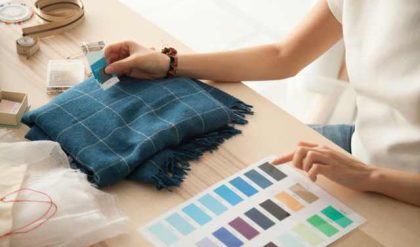
Silk Sheets vs. Satin Sheets
Silk and satin are both luxurious fabrics that can come in a variety of beautiful colors and make bed sheets. They will transform any bedroom into a sumptuous retreat. With silk and satin, you can feel warm during colder months and cool in warmer months, helping offset a high price tag with their versatility. Silk is a natural protein fiber that develops from proteins secreted by silkworms. Since silk is an animal product, difficult to cultivate and time-consuming to weave, silk sheets are very expensive. However, silk is known for its softness, luster, beauty and opulent look. Extract silk thread from thousands of silkworms, and weave into sheets, which have little to no sheen.
Satin sheets aren’t far behind silk in cost. However, satin sheets are woven, thus certain threads are brought to the top (called floating), which makes these threads reflect light and create the high gloss. Although satin sheets are now offered in nylon, acetate, polyester and other synthetic fibers which help these sheets be more affordable, satin sheets are traditionally woven from silk threads. Silk, a very delicate fabric, should be hand washed using cold water and a mild detergent. If your silk is white, you should wash separately since the dye is liable to run during washing. You had better simply dip the silk sheets a few times in soapy water, and rinse clean them. Do not hang it in direct sunlight since that can damage the silk.
If your satin sheets are woven from silk, please follow the above instructions. However, if your satin sheets are woven from polyester or nylon, you can wash it with delicate cycle since they are sturdy enough. Polyester satin sheets should be dried, while nylon can be machine dried on low (but should never see sunlight). Satin sheets woven from acetate need dry-cleaning. It is recommended to look for a high thread count–400 and above–plus a momme weight between 12 and 19 to make the silk sheets durable.
Satin sheets have a high thread count, and they should be labeled as woven. In general, lower-cost satin sheets weren’t woven, so they will feel rougher to the touch and will lose their luster. Both satin and silk sheets eliminate air pockets to retain body heat during winter, while they are also absorbent and will keep you cool during the summer.
Silk Nightgowns vs. Satin Nightgowns
Can you tell the difference between satin and silk nightgowns?
| Satin Nightgowns | Silk Nightgowns | |
| Production | It is made by man from nylon and polyester being woven together. | It is an all-natural fabric |
| Appearance | It has more of a rich, thicker look with a slight shine on one side, and a lackluster flat appearance on the other side. | It has a light shimmer and shine and flows very fluidly. |
| Breathability | It will breathe a little less. | It absorbs humidity and moisture very well.It will absorb any sweat you may produce in your sleep |
| Care Instructions | Cheaper satin can take machine washing.Expensive satin may need to be hand washed, and in some cases dry cleaned | Silk should be hand washed and hung out to dry. |
Silk Pillowcase vs. Satin Pillowcase
Most “good for skin & hair” pillowcases are either silk or satin pillowcases. Satin is a fabric weave that typically has a glossy surface and a dull back. While silk is spun from the natural silk protein filament produced by the silk worm when forming its cocoon. When people ask “silk and satin pillowcases, which is better”, they actually mean silk Charmeuse fabric pillowcases and Polyester satin fabric pillowcases.
Difference between silk Charmeuse fabric pillowcases & Polyester satin fabric pillowcases.
| Polyester satin pillowcases | Silk Charmeuse pillowcases | |
| Source | Synthetic fibers created from oil and has the same chemical composition as plastic bottles. | Natural protein fiber from silkworm cocoons, primarily sourced from China in Asia. |
| Feeling | Slippery with a clearly distinct texture | Softer in feel and the Charmeuse weave affords a more subtle reduction in friction. |
| Health Benefits | Both provide benefits to your skin and hair through reduced friction. | Both provide benefits to your skin and hair through reduced friction.Silk is a natural protein, a very good thermal insulator, helping you to stay cooler in the summer and warmer in winter.Silk is naturally hypoallergenic and is resistant to mold, mildew, fungus and dust mites. |
| Cost | Cheap | Expensive. Silkworm cocoon supply is limited and the process to harvest and spin silk is complex and labor intensive. |

